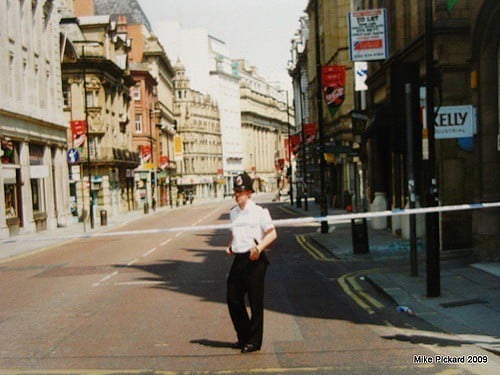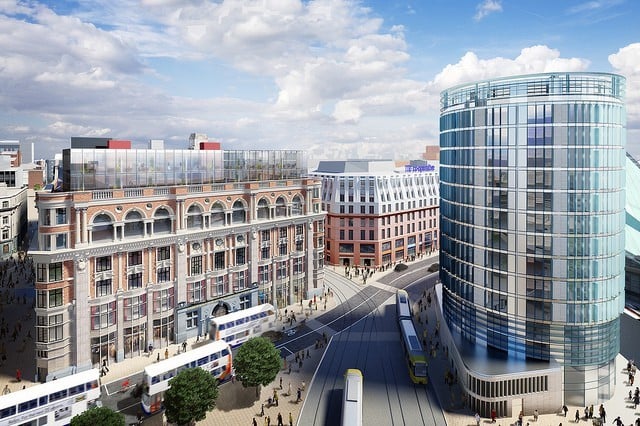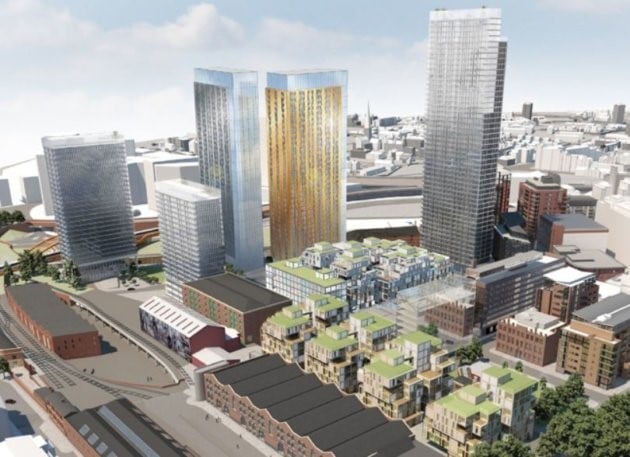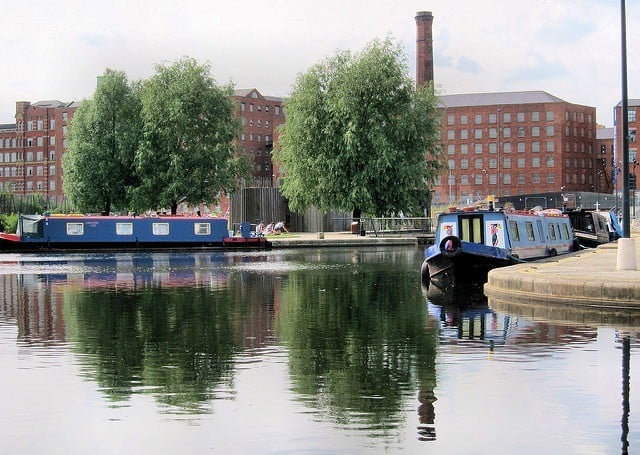
15:27 PM, 7th October 2016, About 8 years ago 1
Text Size
Manchester grew its population by 19% between 2000 – 2011. What regeneration projects have been driving the boom in population and jobs in the city?
NOMA, Spinningfields, Ardwick. To name but a few projects in the regeneration of Manchester. It’s safe to say that Manchester has experienced its fair share of regeneration in the past decade or so. We explore how the face of Manchester has changed, and what’s in store for the future of this city.
Manchester today couldn’t be more in contrast to the Manchester of the 60s and 70s. Manchester was run down and unkempt, with masses of derelict buildings and sprawling wasteland. It did have some vibrancy though, with an impressive emerging music scene that birthed the likes of Joy Division and The Smiths in the 1980s. Redevelopment of Manchester was already underway with the introduction of a new tram network in the early 1990s, but redevelopment of Manchester’s city centre was sped up by the 1996 bombing in the city.
The catalyst that spurred on regeneration in Manchester

Image c/o michaelpickard
In 1996 on Saturday 15th June, a 3,300lb bomb was dropped on Manchester city centre, injuring 220 people and causing extensive damage. Buildings such as the Arndale Centre and Shambles Square were damaged, and this provided the springboard to remodel the buildings and address their weaknesses in terms of functionality and performance. Not only did the Masterplan for city centre regeneration seek to restore existing buildings, but also introduce some exciting architecture to the area in terms of a new flagship Marks and Spencer store, a new Millennium Centre and a bridge spanning Corporation Street.
The regeneration took over six years to complete, and in 2002 the final public open space to be completed, Piccadilly Gardens, was opened. Formerly it was a no-go area, its desolation exacerbated by the increasingly abandoned buildings surrounding it. A large amount of private sector funding was sought after for the regeneration project, on the condition that it would stimulate regeneration in the wider area. Since then, there have been a number of additional redevelopment projects in the city.
Regeneration in the neglected north – NOMA

Image c/o The Co-op Group
Towards the north of the city you have the NOMA regeneration project. Headed up by the Co-operative group, the project aims to be socially responsible and will focus on developing the area north of the city centre which to date has yet to see much development. 4m sq ft of prime real estate will be transformed into office, retail and leisure space. The £800m project is the largest development project outside of the South East of England.
Spinningfields, the “Canary Wharf of the North”

Image c/o Andrew Nić-Pawełek
To the south, between the city centre and Salford, lies Spinningfields. Spinningfields is a regeneration project by Allied London Properties that has been dubbed the “Canary Wharf of the North” due to the presence of several banks including HSBC, RBS and Barclaycard. Spinningfields was a £1.5bn project that consisted of 20 new buildings spanning 430,000 sq metres of commercial, residential and retail space.
St John’s, a “unique and vibrant place to belong to”

St John’s is a new project also led by Allied London Properties. A unique neighbourhood which combines enterprise with culture and living, St John’s aims to be more than just a development made up of bricks and mortar. The development is mainly aimed towards creative agencies, and will incorporate up to 2,500 homes and 600,000sq ft of office space, riverside parks, arts venues, shops, restaurants and bars. The development will mainly be situated on the old site of Granada Studios and feature a £110 million theatre and arts studio named The Factory.
Ancoats and New Islington – “the world’s first industrial suburb”

c/o Alan Stanton
The owners of Manchester City are funding the regeneration of the Ancoats and New Islington area of Manchester. Formerly a run-down part of the city, the area forms part of a new deal to build 6,000 new homes in east Manchester. The owners of Manchester City have pledged £1bn towards the regeneration scheme in Ancoats and New Islington, that will see 830 new homes built in the area. The aim is to take advantage of the existing features of the area, including the canals and historical architecture. New businesses that are springing up in the area are bringing with them fresh jobs and prosperity.
The future in the regeneration of Manchester
Despite the significant regeneration of Manchester that has already taken place, it does not look like things are coming to a halt any time soon. In the next five years, there are plans to overhaul three stations in Manchester, including Oxford Road, Piccadilly and Victoria. Not only are the stations going to be redeveloped, but also the surrounding areas.
Ordsall Chord is a new railway line that will link up Manchester Victoria with Manchester Piccadilly. The aim of this is to reduce travel times between the two stations, allowing for easier and shorter transportation across the city.
More skyscrapers are being built in the city. There are plans to build a 27-storey apartment block off of Deansgate Locks, that will even have its own 90ft high advertising screen. There will also be the ‘Axis’ tower, containing 174 apartments that will be built near to Beetham Tower, currently the tallest building in Manchester.
Manchester – an attractive city to overseas investors
In part due to all the regeneration occurring in Manchester, it is now gaining significant attention from overseas investors. German investors have named Manchester as the most important city outside of London for investment, and German bank Deka have paid £164m for the new office block at One Saint Peter’s Square. Manchester is also the largest economic area outside of London with £56 billion gross value added (GVA). The flow of cash into Manchester does not look to be subsiding, as Germany is expected to spend another £200m in the city before the end of the year. UK property is being seen as an attractive prospect to German investors due to the drop in the sterling in comparison with the euro. Even before Brexit though, German investor Hansainvest bought the 280,000sq ft Amazon distribution hub at Manchester City Airport for £35m.
Research by Knight Frank has shown that property prices in London are beginning to hit an affordability ceiling, and investors are looking at properties elsewhere in the UK. It’s not just overseas investors that are recognising the benefits of buying property in Manchester. Manchester has been experiencing the strongest house price growth of any city in the UK and has received several accolades including being voted the most liveable city in the UK in the Economist Intelligence Unit’s Global Liveability Scale. British investors are enthusiastic about purchasing property in Manchester, especially in terms of student accommodation. Manchester has the largest student population in the UK, and student accommodation investments typically offer excellent return on investments. Student property is also expected to weather the Brexit storm due to the constant demand for purpose-built units and an overwhelming undersupply. Student accommodation investments such as Kings Court, on Hyde Road Manchester offers 8% net income guaranteed for five years, immediate income and no development risk as it is a ready built development.
Arran Kerkvliet, investment director at One Touch Property, comments “it is now an ideal time to consider Manchester property investments. Investors will get to take advantage of affordable property prices and the capital uplift they will experience due to the various rejuvenation projects happening in the city. Manchester has a vast student population and an overwhelming need for more student properties, and these often provide excellent yields due to their locations and demand.”
In some sense, it is quite ironic that a bomb that was meant to cause destruction, in the end contributed to the rise of Manchester as a centre for investment and improvement. With the amount of regeneration of Manchester, it is no surprise that investors are excited about purchasing property in the city, the capital uplift is expected to be phenomenal and it’s showing no sign of slowing down.
Previous Article
No Judicial Review of section 24 for landlords
Christopher Browne
Become a Member
If you login or become a member you can view this members profile, comments, posts and send them messages!
Sign Up9:59 AM, 17th October 2016, About 8 years ago
I'm amazed that this article as comprehensive as it is, makes no mention of Salford Quays / Media City!
Although its a suburb of Manchester, its very much a huge project and will only get bigger in the future; surely this has played a massive part in the growth of Manchester.